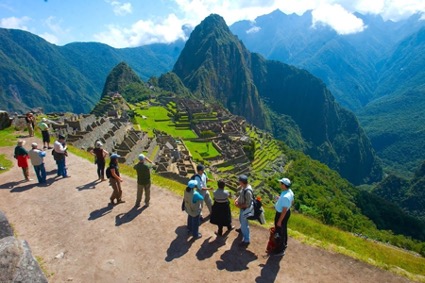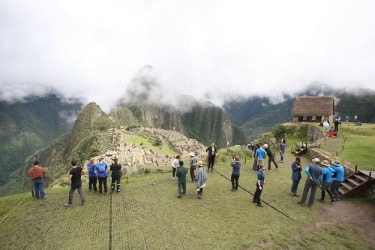
The Inca citadel of Machupicchu is ready to welcome tourists during this high season that Cusco is going through. This was reflected during Peru’s Independence Anniversary Holidays (July 27-29), Decentralized Culture Directorate in Cusco (DDC Cusco), Chief Guido Bayro, affirmed.

In remarks to Andina News Agency, he reported that during Holy Week last March -when visitor numbers increase- the citadel was not prepared for the demand that is now observed, reaching 5,600 visits per day, the permitted capacity.
“The number of tourists arriving at Machupicchu is now within the expected range; during Holy Week, we did not want to authorize the 5,600 visitors because the site was not prepared for such an impact,” he explained.

According to Bayro, more domestic tourists are currently arriving at the site, either for the mid-year holiday period, particularly for schoolchildren, but this figure might decrease in the coming weeks.
Regarding the improved conditions provided at the Inca citadel, he stated that wooden infrastructures were installed, such as stairs, ground protection paths, safety railings, and geoblocks placement “in order to avoid the greatest impact.”
The official said there were some criticisms, at least from a visual point of view, but the additions were made based on recommendations from the United Nations Educational, Scientific and Cultural Organization (UNESCO).
“UNESCO values what we are doing for the protection of Machupicchu. When the organization authorized the 5,600 visitor capacity, it provided us with a contingency plan that we had to follow,” he stated.
Expert’s visit
The DDC director also revealed that Dr. Douglas Comer, whose study was the basis for the increase in visitor capacity to the current amount, arrived at Machupicchu recently.
“We met on July 24 and visited Machupicchu on July 25 surely to make the necessary checks to ensure compliance with UNESCO’s measures,” Bayro indicated.
“We discussed for almost three hours the measures we have taken and our capacity to respond to negative impacts; what we need to do is immediate remediation, supported by technical studies,” he added.
